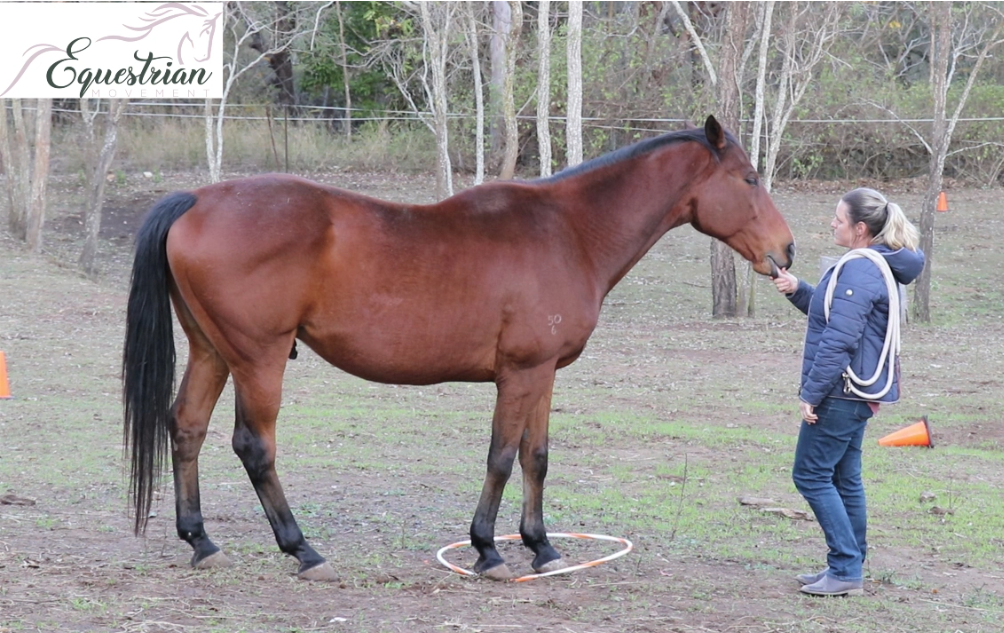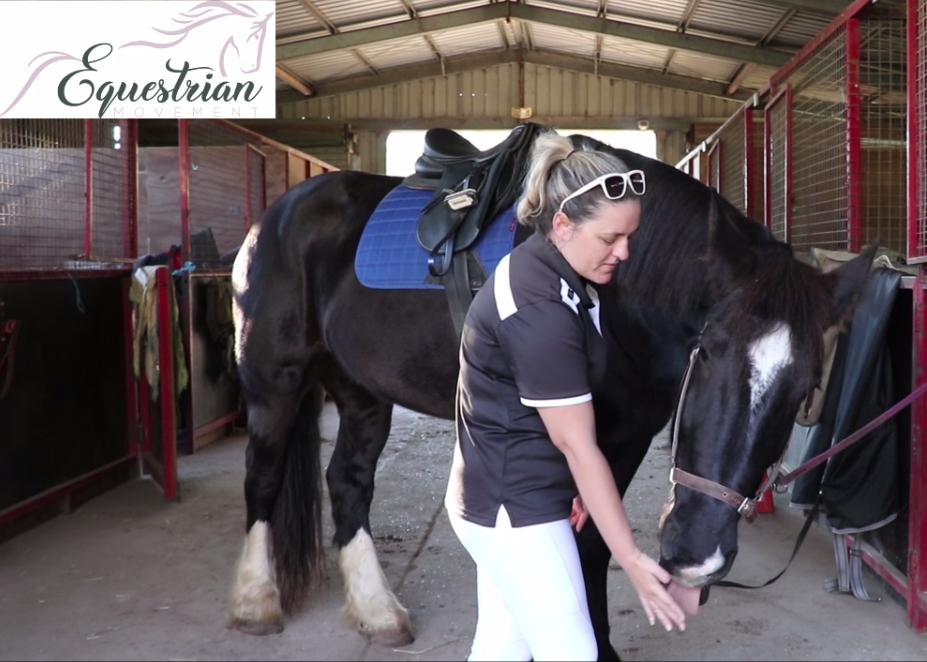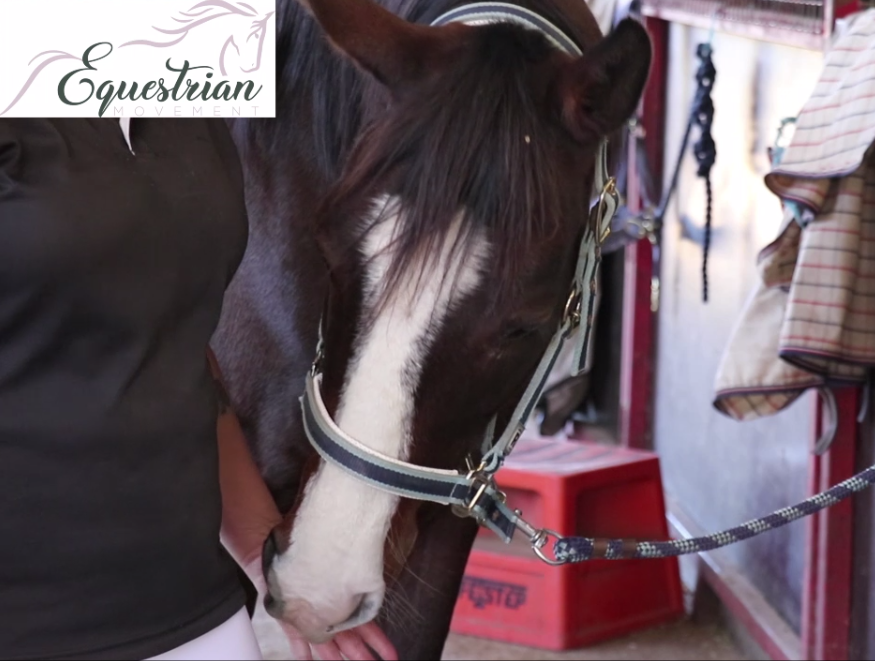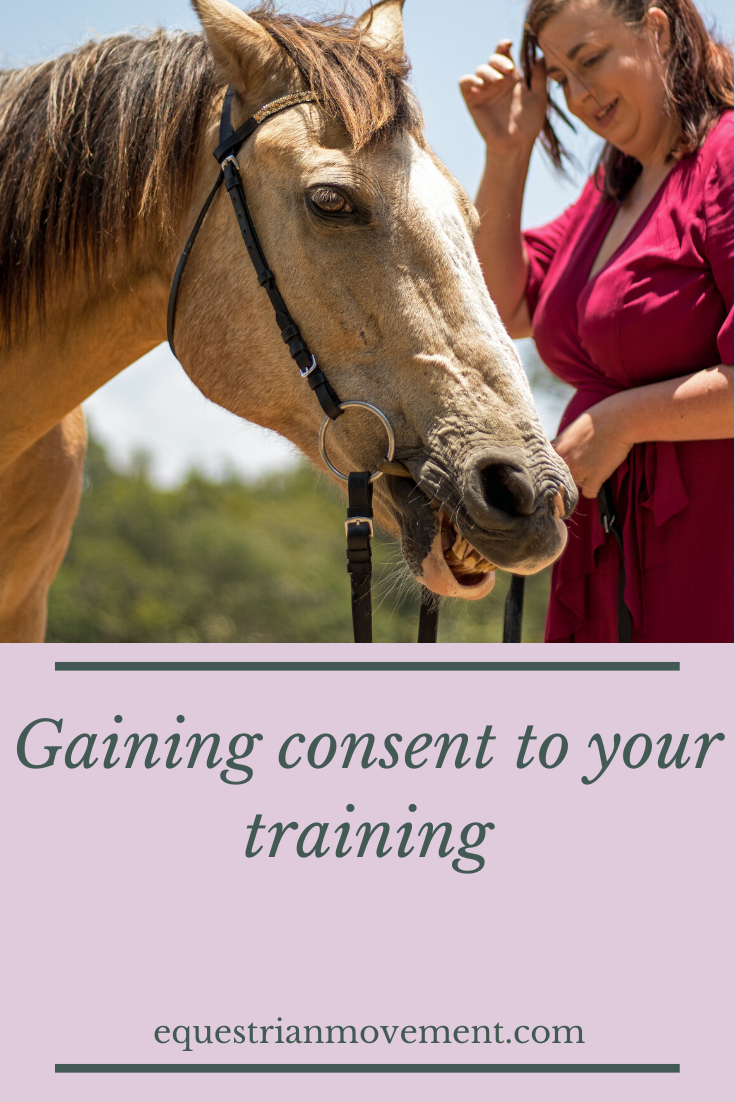Good horse training doesn't make exciting video...
I’m serious - ou wont see me with a bucking, rearing or bolting horse…
Good horse training doesn’t make for particularly exciting video…
Good horse training is a lot of time spent on the basics.
to build trust
Good horse training is being able to get quiet and still
to encourage relaxation
Big secret?
A lot of the GOOD STUFF happens in horse training when we do NOTHING.
You wont see a video of me with a horse rearing, bucking or bolting.
When we address the reason for those behaviours, find our horses threshold for stress, and give them the skills and confidence to ask for their needs and manage themselves emotionally, we don’t need to push them to those extreme behaviours.
But it does makes for incredibly boring video ;P
Are you filling your horse's emotional needs?
We talk a lot in the human world about filling our cups but do you know how to fill your horses emotional cup?
We talk a lot in the human world about filling our cups but do you know how to fill your horses emotional cup?
Every time we work our horses we are creating stress.
That stress can either influence them positively and help them grow and develop or it can influence them negatively and they can develop stress associated vices like crib biting or behavioural issues associated with fear and frustration.
The way that we structure our training sessions should work to create just the right amount of stress that allows them to grow and develop their cognitive skills, emotional range and physical skills. We can do this by giving our horses a tool to connect back in with us to let us know if we are creating too much stress.
When we open this pathway to communication our horses start licking.... a lot!!! And I often find they need a good licking session before we get started to connect and fill their cup and to break up the training session as we go.
Often if they are pushed to the far end of their stress management skills this licking becomes nipping. The nipping is them asking us to back off and be more respectful of the pressure of our asks.
Having this conversation with our horses empowers them to have more control in the training session over what is done to them which builds mutual trust and respect and in turn improves true willingness instead of submission.
Moving from controlling to communicating with our horses
Three is a big difference between telling you horse what it MUST do, and asking it - and a big difference in the response from the horse.
Over the years as a horse rider I have been told a lot that my horse lacks submission.
Anyone who hasn’t heard “needing more submission”, hasn’t been in a competition. Even outside the ring we can hear from our peers how naughty they think our horse is being.
And it can leave us with a feeling of ineptitude that our horse may act out and not do exactly as they are told.
When we get into the dressage ring, our horse being “on the bit” is also considered a sign of submission and our horse even being slightly in front of the bit considered lack of submission.
I actually got to a point with my riding where I thought I wasn’t in control of my horse if it wasn’t “on the bit”. But this couldn’t be further from the truth. We see plenty of riders who are perfectly in control of their horse and it works in front of the vertical.
In fact working our horse incorrectly on the bit actually can create less submission because our cues get muddled up and our horse can’t differentiate between more frame and the brakes.
One of the places I like to get my students to is comfortably letting go of their horses mouth and riding them on the buckle in all paces. It also helps if you are comfortable riding your horse at the fastest that it can go so we’re not holding them back for fear of speed. When we come from a place of controlling our horses, they tend to actually behave worse fighting with us. When we let our horses go and trust that they will still listen we can start working on our communication and therefore willingness.
When we look at communication this is where we use our aids to cue and talk to our horses instead of control what they are doing.
The most important part of communication is not telling the horse what to do but what they are saying in response. If they aren’t responding with a yes to our aid, why? How can we change that no to a yes? Or is our horse trying to tell us something?
When we focus on communication we are giving the horse permission to say no. When we are controlling our horse we are giving them no option but to say yes. And this is problem when they actually have a good reason for no. They are sore, they don’t understand, they have ulcers, they need their teeth done, they can’t physically do what we are asking of them are just some of the perfectly acceptable reasons for our horse to say no and reasons why a horses behaviour may escalate.
One of the ways we broach communication and the option to say no whilst maintaining manners and discipline to still be respectful of us is consent. We teach our horses a cue that they can give us to tell us when they are ready for the next ask or if they need time to process the previous ask. It also helps us to differentiate between the times they are challenging us and taking the piss and the times where they actually need us to help them understand, or to slow down or that they have a legitimate problem that needs addressing.
Do you need help with your horse? We have a free group where can get the support and ask the questions that will help you open the pathway of communication and develop a deeper connection with your horse. Join it here!
Giving Consent
Is your horse giving you permission to work with them?
Does your horse agree with the way you work together?
Giving our horses the ability to say yes or no - to give consent - is an important training tool in the Equestrian Movement tool box.
It is next in line in our philosophies after first do no harm.
One of our big over arching goals is for our training sessions to happen FOR the horse.
WITH the horse.
Not to the horse.
We want them to not only participate but enjoy the learning process, and for movement to feel good for them.
Part of making this work is having the horse able to give consent to the next ask.
Sometimes there is a long gap between the previous ask and when they are ready for the next ask. As trainers and riders we tend to rush the process, and this is when our horses can hit breaking point. When the tension of the ask, ask, ask builds up, their frustration, confusion or overwhelm can burst out of them and be deemed as them being naughty at best and dangerous at worst.
When we give them permission to process and move their emotion (or even better show them how to process and move their emotion), where they can say
“I’m not ready”,
“I don’t understand”,
“my body isn’t ready”,
“I need a break”,
“I’m hurting”,
Or anyother form of no that they might have, we are allowing them to express what they need from us to succeed in their training session.
It may well mean we need to adjust the goal posts for what we hoped to achieve.
When our horse feels listened to and isn’t reacting off their emotions, when that horse feels heard, they don’t have to act out with large and potentially dangerous behaviours to get their message across.
The Missing Element In Your Horse's Training
Can you identify what is missing with your hors'e’s training?
Have you ever considered what could be missing from your training?
A big marker used for identifying if you have a “good” horse is submission.
Submission, willingness and obedience are seen as signs of a “good” horse and it may even earn the horse the status of bomb proof. It comes up regularly as a quality marked for in competition and judged on by peers, trainers and instructors. Resistance, on the other hand, is seen as a quality of a bad horse that’s being naughty and acting out.
Many riders that do have a horse that can act out get confused when we get told our horse is being naughty.
We get upset when we are told our horse is too much for us.
We know deep down our horse is good and we love them with our everything, but we can just end up at our wits end not knowing how to simply get along with our horse.
Why can’t my horse just cooperate so we both can just enjoy each others company!?!
Maybe you’ve even googled:
How do I stop my horse from biting?
How do I stop my horse from throwing his head?
How do I stop my horse from bolting?
How do I stop my horse from bucking?
There have been many times in my riding career where I’ve just sat down on the floor and cried, ready to quit and just walk away because its all just too hard. It never lasts. I pull myself together and try again. And after 25 + years of trying again… and again… and again….
It is my belief that the most important element lacking in our training is giving our horse a voice.
Giving them permission to say no.
Giving them some control in what happens to them in their training.
Let them consent to working with you.
It’s the two way communication that is missing for our horses!
When you think about the crux of the issue, resistance is just the horse saying no, and willingness is the horse saying yes!!
In our industry, willingness is demanded from our horse. It is expected. And if that willingness isn’t given it is common practice that it is forced.
So a lot of the time the willingness of “good” horses I see isn’t given because they WANT to be participating in their training, it is given because they don’t want to experience the consequences and the type of discipline that gets used on them when they aren’t willing. This can lead to a horse being shut down, or learned helplessness, where the horse really resents what is happening to it but doesn’t see any other option. Alternatively, they can go the other way and become aggressive and some may consider dangerous.
Have you ever asked why your horse might say no?
We have. Here are just a couple of reasons:
Your horse doesn’t understand
Your horse is in pain
Your horse can’t do what you are asking
Your horse is uncomfortable
Your horse has an underlying medical condition that needs treating ie. Ulcers.
Your horses teeth need doing and are rubbing and cutting into the sides of their mouth
Your horses feed needs tweaking
Your horses tack doesn’t fit correctly
Your horse has rub areas, galls or sores from either not being properly groomed or tack rubbing from poor fit
Your horse is remembering or has an established learnt behaviour from a bad or poorly trained experience their past
Your horse is getting overwhelmed and doesn’t know how to effectively process its emotions.
These are just a handful of reasons that I have experienced for a horse saying no and therefore resistance.
When I first go out to a new assessment lesson, the most common reason for the horses behaviour being unmanageable - the reason I was called out in the first place - is because that horse has at least one if not more of the above reasons that it hasn’t been able to get across. The horse gets more frustrated and upset, it doesn’t feel heard or listened too and the behaviour escalates past what the owner can comfortably and safely manage.
The first thing I do is open a pathway of communication. I let the horse know I’m not going to make it do anything it doesn’t want to do and that I am there to listen to them. Once they know this, all of that “resistance” and naughty behaviour deescalates rapidly to just small, manageable yeses and nos. Once the horse feels listened to and heard, they don’t need or want to resort to the big dangerous behaviours that are really the big, loud nos. And it is then we can work through and address all of the reasons our horse is saying no.
This doesn’t mean that we allow our horses to bully us and push us around. We still maintain manners and expectations of how they should behave with us. The big difference is how we establish and maintain those manners and expectations we set. We give the horse the tools to say yes and no without it being a case of “them getting away with it” and them taking advantage of us next time.
Once we have ruled out all reasons for our horse saying no, only then can we start taking small steps towards getting a yes and rewarding the yes to encourage more yeses.
Once we have a small yes (this can be as simple as leading in halter in walk, sending them away at feed time or just putting the halter on), we slowly build the number of yeses but we maintain the horses right to say no. Over time we will get consistent, multiple yeses not because they are forced but because the horse enjoys the mental stimulation of learning, the physical stimulation of movement and the emotional stimulation of a dynamic and respectful relationship. The bonus being they can also let us know if they are overwhelmed, frustrated, confused, hurt and all other manner of issues that can crop up in training without having to escalate their behaviour and become dangerous.
The two way conversation is now established and we can move forward again with our education.
And that, my readers, is what is truly missing from most horseman’s trainings.
Looking for more specific content?
Have a question you are seeking answers to? Send us a message and we will create a blog!












